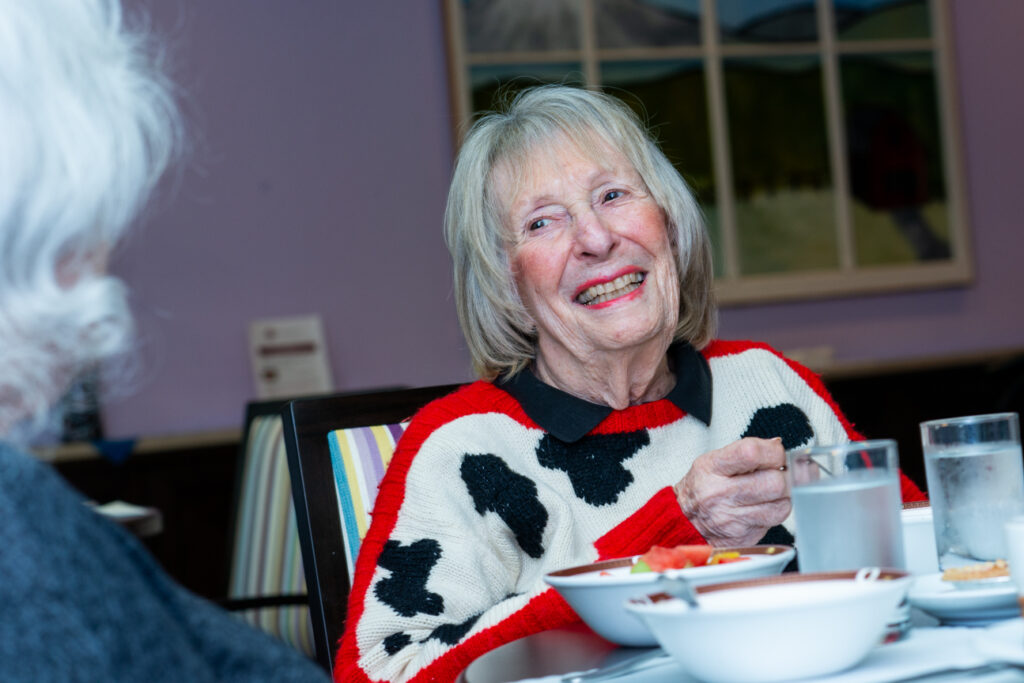
By Sydney Clevenger
With food often foremost on many elders’ minds, the most common questions about senior living revolve around dining.
“Food is really important,” said Andrea ‘Andy’ Staggs, executive chef and director of culinary services for Cedar Sinai Park, the community that includes Rose Schnitzer Manor Assisted Living and Robison Jewish Health Center/Harold Schnitzer Center for Living.
“Dining is social time, and food is essential for nutrition.
By Sydney Clevenger
With food often foremost on many elders’ minds, the most common questions about senior living revolve around dining.
“Food is really important,” said
Andrea ‘Andy’ Staggs, executive chef and director of culinary services for Cedar Sinai Park, the community that includes
Rose Schnitzer Manor Assisted Living and
Robison Jewish Health Center/Harold Schnitzer Center for Living.
“Dining is social time, and food is essential for nutrition. Many elders have dietary needs for good health. And then the cooking and sharing and eating of cuisine bring all kinds of memories for elders.”
Given the importance of food, Staggs has a few tips for elders and their families touring senior communities.
- Seek Meal Choices. Staggs says elders eyeing community living should look at how many food choices are offered per meal.
“There are some places where you are offered one dish per meal,” she said. “For some elders, one “choice” is fine, but others want a variety of options, so make sure to ask, so you don’t get bored with what is offered.
“At Rose Schnitzer Manor, for example, our menus change every week. We have multiple options per meal, and two specials of the day on top of those, plus a salad of the week, or a sandwich of the week. There is a lot of variety; more than what you would ever get going to the same restaurant every day.”
There should also be a good balance of healthy choices and fun choices, Staggs added.
- Are Dietary Needs Respected? It’s a good bet that a senior living community with gluten-free and low-sodium identifiers takes seriously elders needs for dietary restrictions, said Staggs.
“Elders will want to make sure they feel comfortable discussing any dietary challenges with the kitchen staff and those organizing the menu, so they get what they need at mealtime,” said Staggs. “As lifestyles and diets have changed, senior living kitchens need to change.
“We often provide counseling to residents who have specific instructions from their doctors about what they can eat, or should be avoiding, and those conversations are essential for person-centered care because they related to resident health and well-being. What one person can eat, not everyone else can eat.”
- When Can I Eat? Staggs says asking about the dining hours is a legitimate question. Many dining rooms are tightly scheduled as to when breakfast, lunch, and dinner are offered.
“Elders should take a look at the times dining is offered to see if they line up with when they might want or need to eat,” said Staggs. “And they should ask about whether there is food available to them in case the dining room is closed.”
For example, she said, there is always fruit, and often muffins and sandwiches and chips, available at Rose Schnitzer Manor between meals.
“Some communities are very strict about dining times, and what food is available between dining hours, and to dinner stragglers,” she said.
- Taste the Food! If an elder is on a tour, they should most certainly ask to sit down for a complimentary meal, said Staggs.
“It’s so important when you are on a senior community tour, to be treated as if you are a resident,” said Staggs. “Elders should be seated at a table and be able to order right off the menu, exactly as it is for that meal. When we have prospective residents with us, we give them the full dining experience, just as if they already live with us.
“There’s nothing like tasting the food to get a feel for whether dining at the community will appeal to your taste buds.”
###
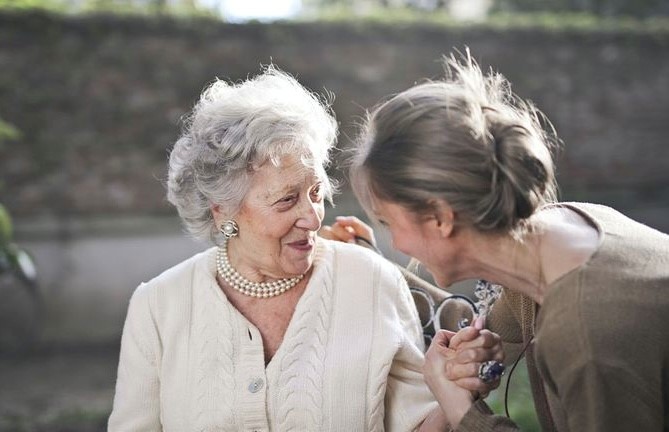
By Sydney Clevenger
Everyone can be forgetful at times. But as aging occurs, how does one tell the difference between momentary memory loss and the start of a degenerative brain disease such as dementia or Alzheimer’s? And what can be done to ensure elders who are experiencing dementia and Alzheimer’s maintain their quality of life, with respite for their caregivers?
The signs of dementia can be confusing, says Nancy Heckler,
By Sydney Clevenger
Everyone can be forgetful at times. But as aging occurs, how does one tell the difference between momentary memory loss and the start of a degenerative brain disease such as dementia or Alzheimer’s? And what can be done to ensure elders who are experiencing dementia and Alzheimer’s maintain their quality of life, with respite for their caregivers?
The signs of dementia can be confusing, says Nancy Heckler, director of Cedar Sinai Park’s Adult Day Services program, one of the Portland area’s premier day services for elders with dementia.
Signs of dementia, says Heckler, include memory problems—particularly in remembering recent events—along with increasing confusion, reduced concentration, personality or behavior changes, apathy and withdrawal or depression, and the loss of ability to conduct everyday tasks.
“The first thing I tell people who notice signs of dementia in their loved one is to have a doctor check them out,” says Heckler. “Often, their medications are wrong, or they need medication, or they have a urinary tract infection, which are very common, and can be easily treated for the elder population.
“Sometimes, a visit to a doctor can make all the difference,” said Heckler.
It is estimated that about 5.8 million people in the United States have Alzheimer’s disease and related dementias, including 5.6 million age 65 and older, and about 200,000 under age 65 with younger onset Alzheimer’s. By 2060, the number of Alzheimer’s disease cases is predicted to rise to an estimated 14 million people with minority populations affected most.
Dasha Kiper’s Travelers to Unimaginable Lands: Stories of Dementia, the Caregiver, and the Human Brain—Heckler’s recommended read for caregivers—says that human brains are programmed for social reasoning, and that if messaging from a loved one doesn’t make sense, we often try to fix the message with reality.
“Instead, the idea in the book is that caregivers should go along with whatever their loved one is saying,” says Heckler, “agreeing calmly, and trying to present solutions, even if what is being proposed makes no sense.”
Heckler gives the example of a program participant who thought she had taken his wife away. To honor his thoughts, Heckler said, “I didn’t take your wife, but let’s go find her.” A call was made to the participant’s wife, and he began to calm down, so Heckler suggested they go outside to wait for her.
“Caregivers should try to go with what their loved one is saying, and if that doesn’t work, take a step back and try different verbiage,” she said. “Caregivers need to stay calm, smile and make eye contact, and be agreeable to what is said, not try to reason with their loved one. Sometimes, silence or moving to a different environment works, too, because there is less stimulation, and what triggered them is no longer there, so the person begins to calm down.
“We get fooled as caregivers with glimpses of good times into thinking, ‘oh, it’s not that bad’,’ says Heckler. “And there are often longstanding familial patterns of communication that have formed between loved ones. Caregivers need to be realistic about what is happening, and make sure they do not make excuses for what is happening, and take time for themselves with breaks from caregiving.”
###
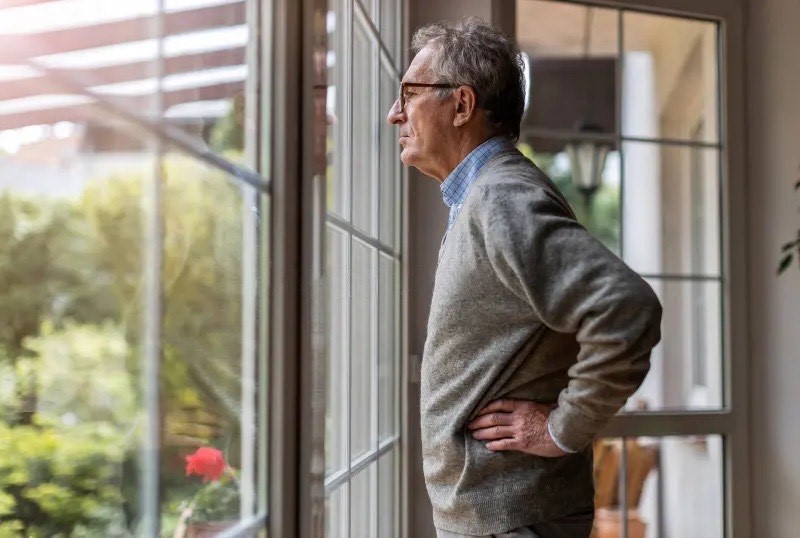
By Sydney Clevenger
The housing market is a far cry from the peak of two springs ago, with interest rates surging again, homes on average taking three months to go pending, and price growth either negative or anemic. Should elders sit out the current market watching and waiting for better times? Or should they look for other indicators to guide their decision on when to sell a long-time family home?
“I think a common sign that it may be time to move is if you start feeling afraid in your home,” said Cedar Sinai Park’s Rose Schnitzer Manor Active Assisted Living Community Outreach Coordinator Catherine Quoyeser.
By Sydney Clevenger
The housing market is a far cry from the peak of two springs ago, with interest rates surging again, homes on average taking three months to go pending, and price growth either negative or anemic. Should elders sit out the current market watching and waiting for better times? Or should they look for other indicators to guide their decision on when to sell a long-time family home?
“I think a common sign that it may be time to move is if you start feeling afraid in your home,” said
Cedar Sinai Park’s
Rose Schnitzer Manor Active Assisted Living Community Outreach Coordinator Catherine Quoyeser. “Beyond changes in feelings of personal security, if an elder finds upkeep onerous, or if the condition of the home is obviously suffering, it may be time to think about selling.”
Formerly a licensed realtor in Oregon with a certification as a senior real estate specialist, Quoyeser is used to advising elders on their home sales. When you have many years and lots of equity or ownership in a home – maybe even having paid off the mortgage – Quoyeser said there is little advantage in trying to time the market or wait for “the perfect time” to sell.
“For people who have been in their homes many years, I would tend to let the emotional factors guide decision-making, as opposed to what the market is doing at the moment,” said Quoyeser.
“Even though it’s less a seller’s market than it has been, local homeowners have seen excellent appreciation over the past 20 to 30 years. The key to realizing these gains is to keep your home well-maintained until whenever you’re ready to sell.”
Quoyeser said selecting a realtor, downsizing, packing, and moving can be overwhelming for many elders. It’s important to take the process in small steps.
For example, “it can be hard for people to winnow their accumulated belongings,” said Quoyeser. “But that process will help your home to sell faster and for a higher price since almost all buyers are drawn to properties that are tidy and minimalist inside and out.”
Quoyeser said seniors should also remember that they don’t have to go through the moving process alone.
“There are many folks out there who can help with downsizing, packing, and moving; and the best ones have different service offerings so you can choose how much help you need, whether it’s consulting for a few hours to create a plan that you can execute at your own pace, or someone who can come in and take care of the entire process from start to finish,” she said.
Managed Moves is one full-service organization dedicated to seniors that offers different packages, depending upon what type of help is needed, and the budget available.
Big Rocks Organizing is another reputable local company that helps with organizing, estate clearing, and moving.
Quoyeser also advises elders to work with a senior real estate specialist—that is, someone who is familiar with the distinctive needs of their age group.
“Typically, a senior real estate specialist will be familiar with elder services and be more sensitive and skilled in helping elders weather the challenges of a move,” she said, “and reach their goals for the next chapter of their lives.”

By Sydney Clevenger
With their many years of acquired wisdom, elders can teach younger generations a lot. But they can’t share if they are not informed.
“Many baby boomers are news junkies,” said Mitch Goldstein, a Life Enrichment Coordinator at Cedar Sinai Park‘s Rose Schnitzer Manor Active Assisted Living. “I learn so much about the world from them. They are such an untapped resource.
By Sydney Clevenger
With their many years of acquired wisdom, elders can teach younger generations a lot. But they can’t share if they are not informed.
“Many baby boomers are news junkies,” said Mitch Goldstein, a Life Enrichment Coordinator at
Cedar Sinai Park's
Rose Schnitzer Manor Active Assisted Living. “I learn so much about the world from them. They are such an untapped resource.
“But if an elder is isolated, they can’t share what they know. It’s important to engage them in conversations about current happenings.”
Goldstein coordinates a monthly round-up of events, mixing together recent news headlines with humor, trivia, notable birthdays, and questions to make participants remember, think, and share.
“Recently, it was the anniversary of Jimmy Durante’s birthday, and I had pictures of Jimmy on the screen, and everyone knew who he was and was reminiscing about his songs and television show,” said Goldstein. “It was a great way to trigger memories, and get everyone talking, and then thinking about today’s actors and comedians and singers.”
To keep up with current happenings, Goldstein recommends that elders join or start a group on current events, read national newspapers, go to the library, or have conversations with loved ones about what they’re reading and thinking.
“News Hour on Oregon Public Broadcasting has a good balance of information, covering all sides of current topics,” he said.
Coming together to discuss current events is not only educational, but social.
“About eight of us sat and kept talking in different groups after our last session, including my wife and I,” said Goldstein. “Elders are looking for opportunities to challenge their minds, in a setting where they can be informed, and are allowed to express themselves, and laugh about information they think is funny.”
One caveat about news sharing?
“The news seems so bad all the time,” said Goldstein. As much as it’s important to stay mentally connected, “it’s important for elders to take breaks from the news. Be sensitive to your own mental health needs, and care for yourself.”
Diane, for example, said she likes to stay up on what’s happening, but she limits her news consumption to radio only so she does not have to see visuals that could be upsetting. She prays for a better world, and says she is glad her children are strong people, as the news has not gotten better from the time she was a girl. She also loves Goldstein’s news sessions which she describes as “amazing.”
“We curate a lot to be sensitive, and try to strike a balance,” said Goldstein. “We have kibbitz questions that are taken from the headlines, and then people get to weigh in, and sometimes we split into groups and argue different sides. There are a lot of really smart people who offer their opinions.
“It’s a learning opportunity, but so fun. I love having conversations with everyone.”
###
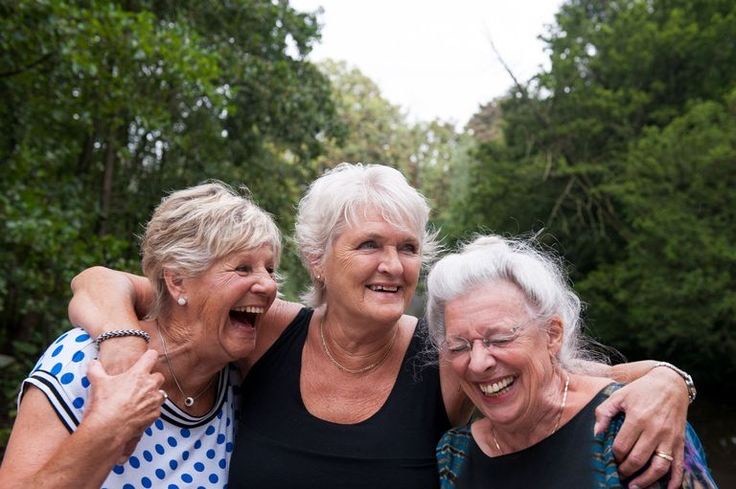
By Sydney Clevenger, with research assistance from Rose Schnitzer Manor Active Assisted Living Resident Arlene Layton
If an elder can’t hear, it’s hard for them to participate in life. And poor hearing can increase elders’ risk of dementia.
That’s according to Darin Scheurer, owner of Portland, Oregon-based SmartStep Hearing.
“There are seniors who live in social isolation, or they are in a self-imposed isolation,
By Sydney Clevenger, with research assistance from Rose Schnitzer Manor Active Assisted Living Resident Arlene Layton
If an elder can’t hear, it’s hard for them to participate in life. And poor hearing can increase elders’ risk of dementia.
That’s according to Darin Scheurer, owner of Portland, Oregon-based
SmartStep Hearing.
“There are seniors who live in social isolation, or they are in a self-imposed isolation, because of hearing loss,” said Scheurer. “If we’re not hearing, we’re not stimulating the brain. Recent studies are showing that social isolation and isolation due to hearing loss can lead to cognitive decline.”
Results from a study of 575,000 elders over age 60 found that hearing loss was associated with an increased risk of dementia, compared with individuals who have no hearing loss, particularly amongst people not using hearing aids
(JAMA Otolaryngol Head Neck Surgical, January 2024). The researchers concluded that hearing aids might help or delay the onset and progression of dementia.
Additionally, researchers in
The Lancet Healthy Longevity journal recently reported that hearing aids can help lower the risk of early mortality, primarily because hearing aids can “help prevent or slow the progression of dementia.”
(Medical News Today, January 4, 2024)
Scheurer recommends that everyone over age 50 should have their hearing checked annually.
“Whether you go to Costco, a primary care doctor, an audiologist, a hearing aid specialist, or an ear, nose, and throat specialist, you will have access to a comprehensive hearing test that can offer good results and determine if a treatment for hearing loss is needed,” said Scheurer. “Statistically, by the time people are 65, one in three has hearing loss, and by age 80 it’s one in two. And 100 percent of 90-year-olds have hearing loss.
“So, a great first step for elders is to get their hearing tested, even if they think they hear well.”
Scheurer notes that when people begin to lose hearing, the high frequency end of the spectrum is affected sooner than the low end.
“That means seniors may be able to hear others who are six feet apart in a quiet room, but when they go into a large noisy room with a lot of people, they may instead hear mumbles.”
Scheurer says elders who are beginning to lose hearing have particular troubles with consonant sounds: letters like S, T, F, and K.
“Background noise is measured as a low frequency sound so if you’re hearing all the noise in the room just fine, but not the clarity of other people at your table in a noisy space, hearing loss is a strong possibility,” he said.
In a senior community, hearing loss can mean missed connections with friends and family, and the inability to fully participate in activities.
“Hearing aids can be expensive, and it takes time to adjust to them,” said Scheuer. “On the flip side, it’s really cool to be able to help someone with technology that is non-invasive and can make a real difference in their quality of life.”
###
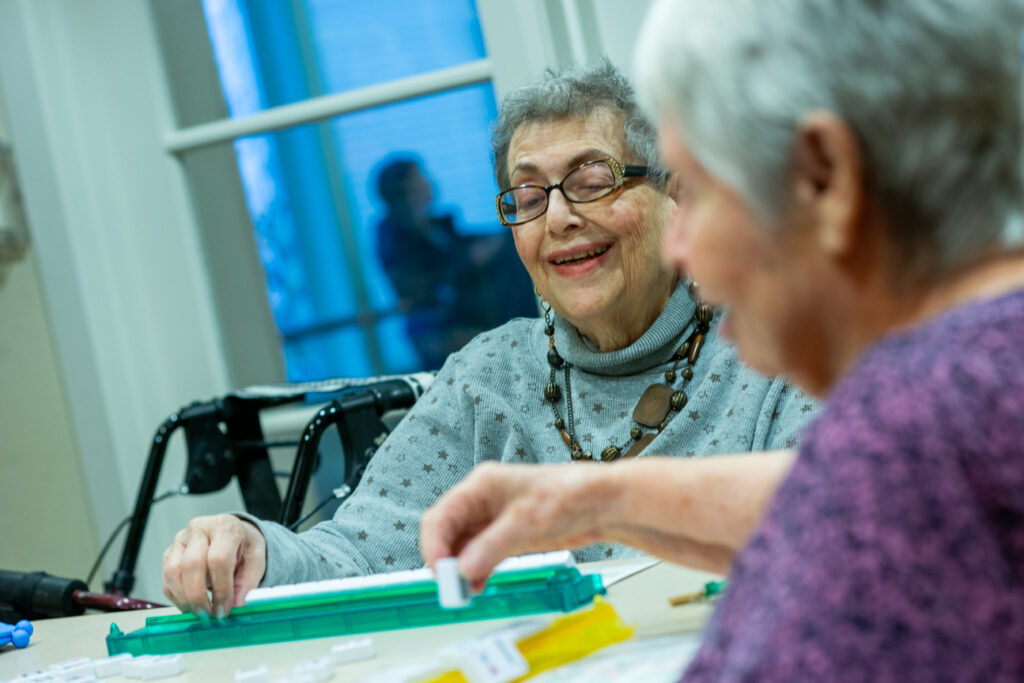
By Sydney Clevenger, with scheduling assistance from Rose Schnitzer Manor Active Assisted Living Resident Arlene Layton
With all that’s happening in the world, particularly since Covid, aging with grace has become an even tougher task.
What makes some individuals more resilient to life’s ups and downs?
We asked three elders at Cedar Sinai Park‘s Rose Schnitzer Manor Active Assisted Living—Eva,
By Sydney Clevenger, with scheduling assistance from Rose Schnitzer Manor Active Assisted Living Resident Arlene Layton
With all that’s happening in the world, particularly since Covid, aging with grace has become an even tougher task.
What makes some individuals more resilient to life’s ups and downs?
We asked three elders at
Cedar Sinai Park's
Rose Schnitzer Manor Active Assisted Living—Eva, Reva, and Eve— for tips on keeping positive, active, and engaged. That scheduling a get-together with the three ladies was a task unto itself—they had only a short window of time between a friends’ lunch, Mah Jong, and a mindfulness lecture—leads to tip number one.
- Socialization
Our seniors agreed that it is important to be independent, but also to have people around regularly.
“I thrive on people,” said Eva, 89. “I suggest for people to get involved and not live by themselves.”
Reva, 81, agrees that isolation can be a recipe for negativity. “Finding peers with whom to share and not depending upon your children for entertainment is important,” she said. “Sometimes, my daughter who lives in the town I live in will call and ask me to dinner. And I’ll say ‘Gee, I’d like to, but I’m doing such and such.’ That’s the kind of relationship I want. There are people where I live that I can talk to and socialize with and enjoy.”
Adds Eva: “I can’t imagine staying in a house by myself and thinking that’s good living. The TV doesn’t give much interaction. Here, I can walk out of my room and talk to the staff or visitors and it’s very nice.”
- Humor
Eva hails from California most recently, and Reva from Connecticut. They didn’t know each other previously before living in a senior community. But they hit it off right away due to their similar humor.
“I got here about a month before Reva did,” said Eva. “And when she came into the dining room, she was looking for a place to sit. She came to my table and we just hit it off. We’ve sat together ever since, and our group has grown. We just have a great time together. We love to confuse the servers when they ask our names since their names rhyme. We always say if we were ever in the same school at the same time, the two of us would have been expelled. We laugh a lot. It helps; it really does.”
- Purpose
For Reva, playing games like bridge, Scrabble, and Mah Jong keep her mind active. And she starts every day by playing a round of Wordle. “Got it in three this morning,” she said. “I did, too!” said Eva.
Eve, 94, suggests focusing on what you can do, and what you want to do, rather than what you can no longer do. “A woman came into my office when I was still working and said, ‘You know, my mother gets up in the morning and she goes into the bathroom, looks in the mirror, and says, ‘Oh, I’m so glad to see you!’ I thought that was a very good attitude,” said Eve.
Reva said elders should take the opportunity to try new experiences. She was recently inspired by a fellow resident who went to France at age 98 for a World War II ceremony.
“That made me think . . .maybe I could travel at age 98!” said Reva.
“Never say never,” added Eve.
###

By Sydney Clevenger, with research by Rose Schnitzer Manor Active Assisted Living Resident Arlene Layton
When searching for senior living, it’s important to consider potential costs beyond what’s quoted up front for rent. Many communities charge extra for health care, amenities like parking and package delivery, and even administrative services that seniors are used to receiving at no cost.
“Since every community handles amenities differently, we recommend that seniors touring independent and assisted living keep a check list of services that are critical to their day-to-day lifestyle so they know what to expect with cost before they put down a deposit,” said Cedar Sinai Park‘s Rose Schnitzer Manor Active Assisted Living Building Services Director Tammy Heard.
By Sydney Clevenger, with research by Rose Schnitzer Manor Active Assisted Living Resident Arlene Layton
When searching for senior living, it’s important to consider potential costs beyond what’s quoted up front for rent. Many communities charge extra for health care, amenities like parking and package delivery, and even administrative services that seniors are used to receiving at no cost.
“Since every community handles amenities differently, we recommend that seniors touring independent and assisted living keep a check list of services that are critical to their day-to-day lifestyle so they know what to expect with cost before they put down a deposit,” said
Cedar Sinai Park's
Rose Schnitzer Manor Active Assisted Living Building Services Director Tammy Heard. “So often we hear from residents about previous living experiences where they were shocked at all of the other costs added to the base monthly fee.”
That was the experience of Ann, who moved to a facility for its close-in parking, access to a full kitchen, and in-room washer and dryer unit.
“Parking close to the front door was important to me, so I was happy to pay extra for parking,” said Ann. “I was excited to have my own washer and dryer in my unit, but when they needed repair, I had to pay for the maintenance, which I didn’t know ahead of time.” As for the kitchen, Ann said she ended up needing room service more often than not, and was unaware that such a service would be extra.
Ann said she wished she’d asked about additional costs, like package delivery, which turned out to be $5 at minimum per package, and the availability of amenities like added storage, which was touted, but turned out to be unavailable due to a long wait list. There were also fees for administrative services like faxes and copying.
“If I was going to move again, I’d find out what incidental costs would be, and ask more questions,” she said.
Pete lived at a new facility in Seattle, with his wife, Jan, and was also struck by the hidden costs.
“The cost at our new place was 15 to 20 percent higher than other communities,” he said. “It was very expensive to rent monthly because it was new.
“And then after two years, it was obvious my wife needed more health assistance, and we had to go to an outside agency to find help on our own because there were no nurses on staff, which we didn’t know about ahead of time. They were also having trouble with staffing minimum wage jobs, and staff wasn’t always handy to help with even small tasks.
“The extra fees to pay for health care added up,” added Pete, who said those inquiring about senior living should think carefully about future needs, and what they might cost, as well as current ones. He added that senior living homes often have a buy-in, which is another financial piece about which to inquire.
“When we decided to move to Portland, we looked at several places, but chose one with many amenities included,” said Pete. “I feel very strongly it is the best choice we could have made.”
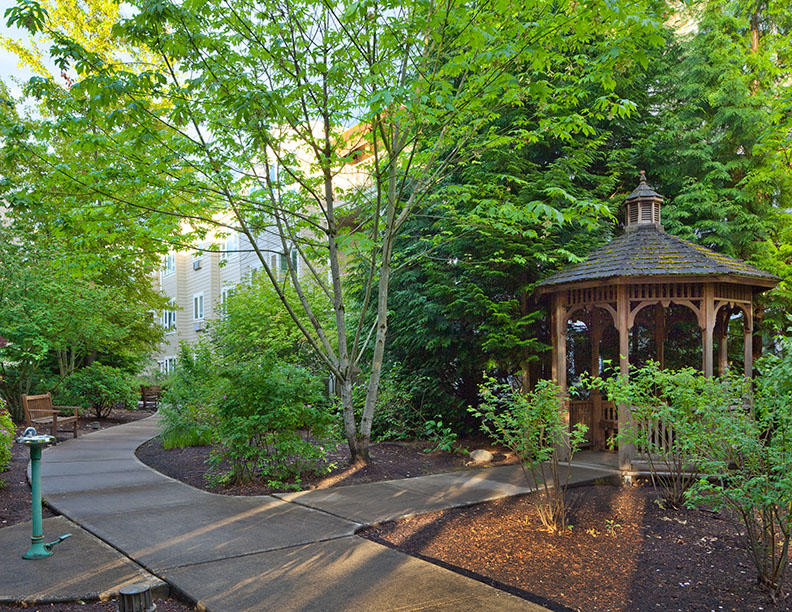
By Sydney Clevenger
First impressions count, and that’s an adage especially true when searching for an elder living community.
To truly recognize a community as home, there are several elements one should experience when first walking through the door of an elder living facility, said Cedar Sinai Park Community Program Director Jennifer Felberg.
The first perception, said Felberg, should be the environment.
“Many of our visitors to Rose Schnitzer Manor immediately comment on the lightness and brightness and homey-ness of our active assisted living community,
By Sydney Clevenger
First impressions count, and that’s an adage especially true when searching for an elder living community.
To truly recognize a community as home, there are several elements one should experience when first walking through the door of an elder living facility, said
Cedar Sinai Park Community Program Director Jennifer Felberg.
The first perception, said Felberg, should be the environment.
“Many of our visitors to Rose Schnitzer Manor immediately comment on the lightness and brightness and homey-ness of our active assisted living community, which sets the tone for the rest of the experience,” she said. “You want an environment that’s uplifting and warm, with small and large spaces for privacy, comfort, and personalization.”
To be known, have a sense of well-being and fulfillment, and to have a voice are essential tenets at
Rose Schnitzer Manor Active Assisted Living, and those values should be felt walking through every beautiful space, said Felberg.
“People in a tight-knit community know one another, and are known by others,” she said. “If I were looking for a promising elder living community, I’d observe whether the leadership is visible. I’d also pay attention to whether staff smile and greet each other, which indicates they know and support one another, and are integral members of our community.”
Knowing each person is a core value of the Pioneer Network, a New York -based advocacy group championing a culture of aging in which individual voices are heard and choices are respected, no matter the environment.
“You want to see that residents and their home are honored and respected,” said Felberg. “Our community of residents should always feel comfortable not only in the privacy of their apartment, but in all of the public spaces, as well.
“Is there somewhere folks can look out the window at the beautiful gardens, visit over a cup of coffee in a comfy chair, or do a puzzle?” asked Felberg. Group activities are important, too, but a fully engaged life is demonstrated by how people are choosing to spend their unstructured time, or have opportunities for spontaneity.”
Felberg said communities should strive to ensure elders feel like they belong, and are developing meaningful relationships with the people sharing their living environment.
“Look for whether residents and caregivers also are developing joyful connections,” she said. “Connections are what creates a culture of community, and the importance of a community’s culture cannot be underscored enough.”
Noticing whether a community is welcoming and whether there are people of all colors and nationalities and religions is another view to take when touring a community.
Added Felberg: “A welcoming, diverse community with the Jewish values of love, honor, and respect are the backbone of our culture of community, and it is a difference you can feel.”
###
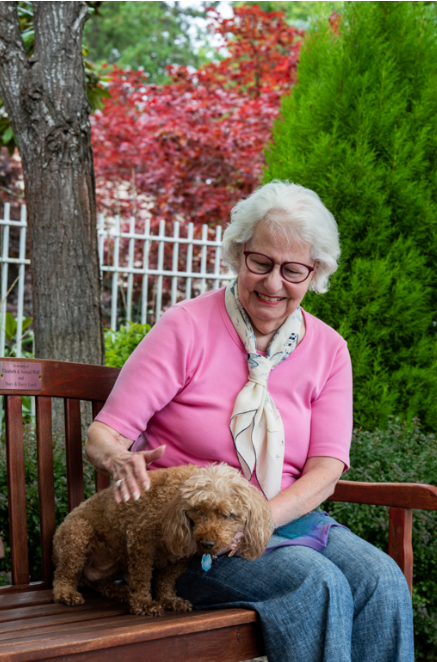
By Sydney Clevenger, with research from Rose Schnitzer Manor Active Assisted Living Resident Arlene Layton
When resident Elaine was looking for active assisted living, she was adamant that her poodle-mix, Nettie, was coming with her.
“I got Nettie when she was 10, and I’ve had her five years, so she’s 50,” said Elaine, of her apricot-colored fluffy friend.
Nettie often attends singing with the Mazel Tones,
By Sydney Clevenger, with research from Rose Schnitzer Manor Active Assisted Living Resident Arlene Layton
When resident Elaine was looking for active assisted living, she was adamant that her poodle-mix, Nettie, was coming with her.
“I got Nettie when she was 10, and I’ve had her five years, so she’s 50,” said Elaine, of her apricot-colored fluffy friend.
Nettie often attends singing with the Mazel Tones, politely resting under Elaine’s chair, blinking sweetly at other residents and is unperturbed by the piano.
“She’s the only daughter I have,” said Elaine. “She is good company, and brings love to everyone here at
Rose Schnitzer Manor.”
According to a recent study sponsored by the American Association of Retired Persons, more than half of older adults (55%) reported having a pet. Pet owners said their pets help them enjoy life (88%), feel loved (86%), reduce stress (79%), provide a sense of purpose (73%), and help them stick to a routine (62%).
Respondents also reported that pets connect them with others, help them stay physically active, and help them cope with physical and emotional symptoms, including taking their mind off pain.
Resident Marie brought her seven-year-old adopted shelter cats, Cricket and Panda, to Rose Schnitzer Manor when she moved in, and said having pets was definitely a factor in her decision about where to live.
“It was definitely a benefit,” said Marie, with a laugh. I’m not sure which was more important: having the cats, or having intelligent people!”
Marie agrees that her animals help with socialization.
“My cats communicate with me, and they will tell me what they want and what they need. I was down on the first floor one day, and there was a whole group of people having a great conversation about my cat,” said Maire. “People also come up to my room to see the cats. The cats love to lay on the carpet and look out the window at the birds.”
Having a cherished pet should not be a barrier to moving to assisted living, said
Cedar Sinai Park's
Rose Schnitzer Manor Active Assisted Living Administrator Rachael White.
“Elders should be assured that the right facility will welcome their pet,” she said. “At Rose Schnitzer Manor, we have 27 acres upon which residents can walk their pet, and we also allow pets in residents’ rooms. We even allow pet visitations if a resident is caring for someone else’s pet.”
Rachael added that pets become part of the community and are not only a comfort to residents, but also to the staff.
“Our team loves to hear the cats purr and to pet the dogs. It’s truly like being in the comfort of home.”
###
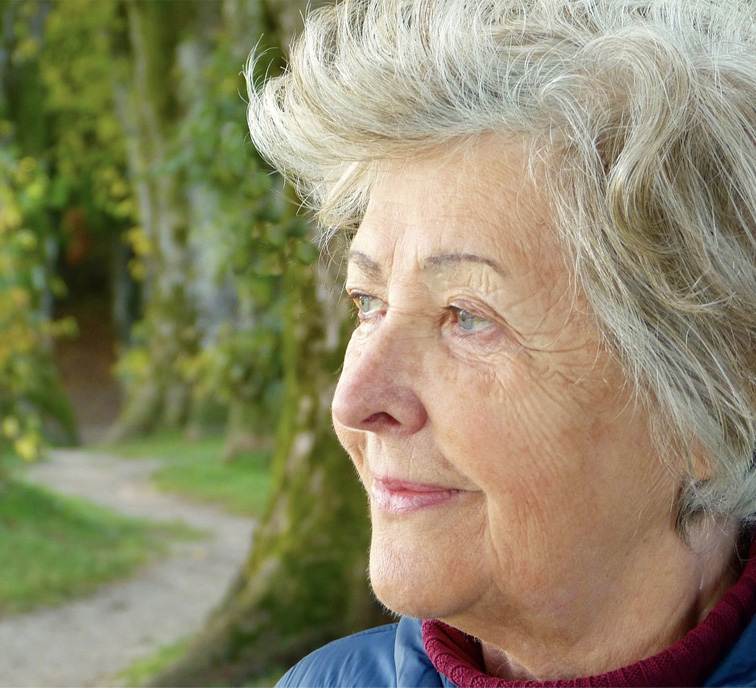
by Sydney Clevenger
Even for elders blessed with a large family providing regular support, peer to peer socialization is a critical aspect of senior health that many people overlook.
“Seniors living alone often struggle with depression,” said Deborah Elliott, longtime marketing consultant in the senior living industry. “We see this often when a spouse dies, and the isolation brought about by Covid did not help our aging parents feel connected if they were living at home alone.”
Senior living communities provide an opportunity for regular social interaction,
by Sydney Clevenger
Even for elders blessed with a large family providing regular support, peer to peer socialization is a critical aspect of senior health that many people overlook.
“Seniors living alone often struggle with depression,” said Deborah Elliott, longtime marketing consultant in the senior living industry. “We see this often when a spouse dies, and the isolation brought about by Covid did not help our aging parents feel connected if they were living at home alone.”
Senior living communities provide an opportunity for regular social interaction, as much or as little as seniors decide they want and need.
Elliott remembers a prospective resident who was in post-acute care at
Cedar Sinai Park's
Robison Jewish Health Center after a significant cardiac event and was ready for discharge. She was advised not to go home by herself, and her family wanted her to have access to medical care around the clock, treatment they could not provide.
“She had a great big family, all living in the Portland area, really supportive, and they all brought her over to
Rose Schnitzer Manor Active Assisted Living to meet with me,” said Elliott. “And after our tour, the mom said to me privately that she was not moving in. She said she’d stay for a month or two, and then she was going home.
“So, we made that ‘the plan.’ I told her she could drive the bus, so to speak, and make the decision regarding how long to stay with us. As long as the healthcare team was confident about her returning home to live on her own after a month or so, she could do so.
“The family did a great job decorating her apartment to make it feel like home and I saw her almost every day,” added Elliott.
“After a couple of months, I found her in the art studio painting. I reminded her that she had been with us for more than two months, and asked what happened to her going home.
“She looked at me and said, “I know. I really like it here. Is it okay if I stay?
“It reminded me that even though the resident had the support she needed from the health services team and her family, what was essential for her mental and emotional and spiritual well-being were the relationships that she forged while she was in assisted living.
“She was so busy meeting and helping others, that her kids couldn’t get her on the phone, which is exactly what they had wanted for her because she had been isolated and alone before her heart event.”
The lesson, said Elliott, is that elders need regular socialization with their peers, beyond the love and support of family or caregivers. Elders who have experienced the recent loss of a partner or friend, are especially susceptible to depression. Other signs of intense sadness that may need medical intervention include feelings of helplessness, hopelessness, and worthlessness.
The need for socialization is one key indicator for seniors when they and their families are determining whether it’s time to move to assisted living.
Late-life depression affects about six million Americans ages 65 and older, according to WebMD, but only 10 percent receive treatment.
“Even in the most loving and attentive family, seniors can feel adrift and lonely if they do not have access to people their own age to whom they can relate and connect with day to day,” said Elliott. “It’s important to remember that depression in older people can be overlooked when dealing with the effects of many illnesses, disabilities, and medications.
“It’s important to be watchful of a sadness that lasts longer than usual, and to seek medical help if there are any doubts.”












